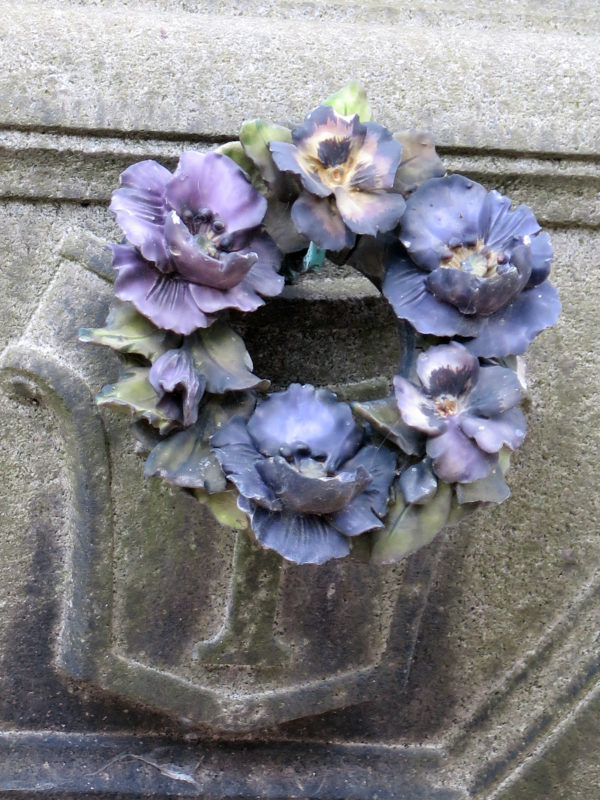
“Empty, hollow, thud,” is a phrase frequently heard in this household, muttered by various members of the family. It is meant to describe one’s emotional status (among other things after listening to the news.) The words originated in a classic 1970s paper in psychology titled On being Sane in Insane Places. Which would also describe the state after listening to the news, don’t you think? Details of the Rosenhan study, placing sane people into psychiatric hospitals with only those words (heard by fictional voices) offered as presenting complaint, and seeing how the fakers would be (in)correctly diagnosed, are described in the link below.
https://en.wikipedia.org/wiki/Rosenhan_experiment

Since the phrase was prominently heard after last week’s tax vote and the decision to remove the US from the UN global compact on migration, I decided that I’ll dedicate this week to beauty wherever I can find it, and if I can’t find beauty I’ll make do with whimsey. Anything to cheer us up.

Now you might think that the last place to look for cheer is a cemetery, but you’d be mistaken. Cemeteries contain tons of beautiful details and many surprises. I was first alerted to this in the 1960s, when adorning myself like all other weekend hippies with lots of bead jewelry. A friend made me bracelets of tiny, tiny glass beads in an array of muted pastel colors in blues, purple, greens. Turns out, she was a grave robber. No joking, either, she took those beads from French cemeteries where they were lying around the disintegrating Imortelles, faded by the impact of the weather.

What is an Imortelle, you ask? They were extremely elaborate weavings of beads and wires that were put on the graves as funeral wreaths that lasted. At least lasted longer than real flowers. Here is what how it’s described on the web:
The art of making flowers out of beads is many centuries old. Although there is very little documentation on the development of this art, research has shown that the first primitive bead flowers may have been made as early as the 1300’s in Germany, when steel needles and wire were developed …..
One of the reasons that flowers are associated with churches has to do with beads. In the thirteenth century a form of prayer using a string of beads was instituted by St. Dominic. The string, called a rosary, consisted at that time of 15 units of beads. Each unit contained 10 small beads, preceded by one larger one. A prayer was recited at every bead. The word “bede” (sp) is Middle English for “prayer.” Because of the length of the original rosary, it became customary to pay someone, usually a resident of an almshouse, to recite the prayers. These people were referred to as bede women or men, and it was they who made the first bead flowers. ….The French used bead flowers as funeral wreaths. These wreaths were called “Immortelles,” and ranged from 3 feet to 4 feet in height. They would be left at the grave of the deceased. Since they were made on metal wire and were exposed to the weather, most of these items were destroyed within a year, but a few examples remain today. … Not only are there bead flowers mounted on the frame of the Immortelle, but the frame wires are wrapped in beaded wire as well. Wires strung with beads might have been coiled or braided as well before wrapping onto the piece. The whole surface of the Immortelle would be wrapped over with wire strung with thousands and thousands of beads.
Not only are there bead flowers mounted on the frame of the Immortelle, but the frame wires are wrapped in beaded wire as well. Wires strung with beads might have been coiled or braided as well before wrapping onto the piece. The whole surface of the Immortelle would be wrapped over with wire strung with thousands and thousands of beads.
My current take on cemetery flowers focusses more on the porcelain ones that you also find in France (today’s photographs – the other option would have been the flowers made out of fabric and plastic, but I like these better). My take on bead jewelry has changed as well. Still supplied by a friend, albeit a different one, but much improved in provenance – check her work out at
http://www.jewelryatoz.net/, it’s delightful.
Note, on many of these flowers, nature is taking over in form of moss and little plants – the perfect mix.
















Joan Zivi
You’ve definitely found beauty this week. Thank you for sharing with the world!